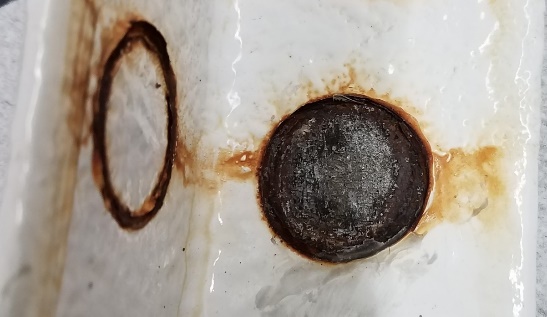Research Problem StatementNJDOT Research
This project was undertaken to develop a procedure to accept new coating systems for over-coating of steel surfaces and the results are presented in three parts. Section I and Section II covers acceptance procedure and details of information needed based on accelerated corrosion test. Section III presents a model for predicting field service life using the accelerated test results.
Research Objectives
Prior to 2016 NJDOT approved new systems for overcoating based on the evaluation and recommendation of NEPCOAT. This organization discontinued their test program. A decision to develop a new test procedure was made by NJDOT panel after the research team presented the current state of the art and the need for a new method. Therefore, a new protocol for evaluating durability of coatings and their effectiveness in reducing corrosion of steel structures was developed. Coatings that are known to provide excellent and weak corrosion protection were tested using the proposed protocol and the results show a clear difference between the best and the poor coatings. The test results also correlate well with one of the long-term field-study.
While the implementation process was in progress, the project was selected as one of the Sweet 16 Projects by FHWA. This National recognition came with some additional tasks such as two poster-presentations. The project also won Implementation Award from NJDOT. These recognitions provided opportunity for more dissemination and obtain input from more researchers and state DOTs. The results were presented in a number of meetings including: TRB Committee on Corrosion, as a paper in TRB 2019, in a regional meeting of DOTs in Michigan, and poster sessions for FHWA and TRB 2020. Another presentation was made in a SSPC conference in California.
Methodology
The major tasks were: Update the procedure for accepting new coatings by incorporating the recently developed test protocol, develop a model to predict field service life using accelerated test data, promote the use of the new test protocol at national level and preparation a final report that will provide guidelines for industries to submit request for adding new coating systems.
Results
The results are presented in three parts. Section I and Section II covers acceptance procedure and details of information needed based on accelerated corrosion test. Section III presents a model for predicting field service life using the accelerated test results. Key steps of acceptance procedure are: (i) Submission of basic information for initial review, (ii) The required test results for evaluation, (iii) Initial approval and addition in the QPL as provisional candidate and (iv) Final approval after obtaining field data for a minimum of 2 years.
 Steel Surface after the pull-off of circular-coating-patch at early stage: Very little corrosion and loss of pull-off strength.Detailed guidelines are presented in the second section for conducting accelerated environmental exposure tests and reporting the information needed for approval. The new test method is based on direct pull-off (adhesion) strength at various stages of corrosion and provides clearly measurable degradation within three months of accelerated exposure. The results show a clear difference between the best and the poor coatings and also correlate well with results of long-term field study.
Steel Surface after the pull-off of circular-coating-patch at early stage: Very little corrosion and loss of pull-off strength.Detailed guidelines are presented in the second section for conducting accelerated environmental exposure tests and reporting the information needed for approval. The new test method is based on direct pull-off (adhesion) strength at various stages of corrosion and provides clearly measurable degradation within three months of accelerated exposure. The results show a clear difference between the best and the poor coatings and also correlate well with results of long-term field study.
A model for predicting the service life of coatings using the accelerated test results, presented in Section III is based on the science of corrosion, models available in existing literature and information available on field performance. The model can be used to estimate the service life new formulations using accelerated test results that can be completed within one year.
Posted in Uncategorized.
